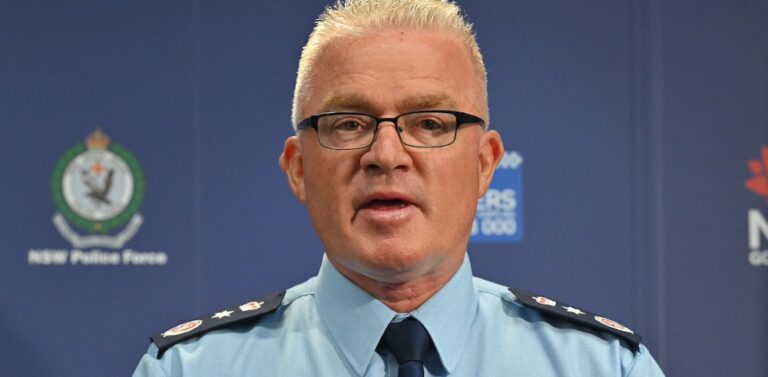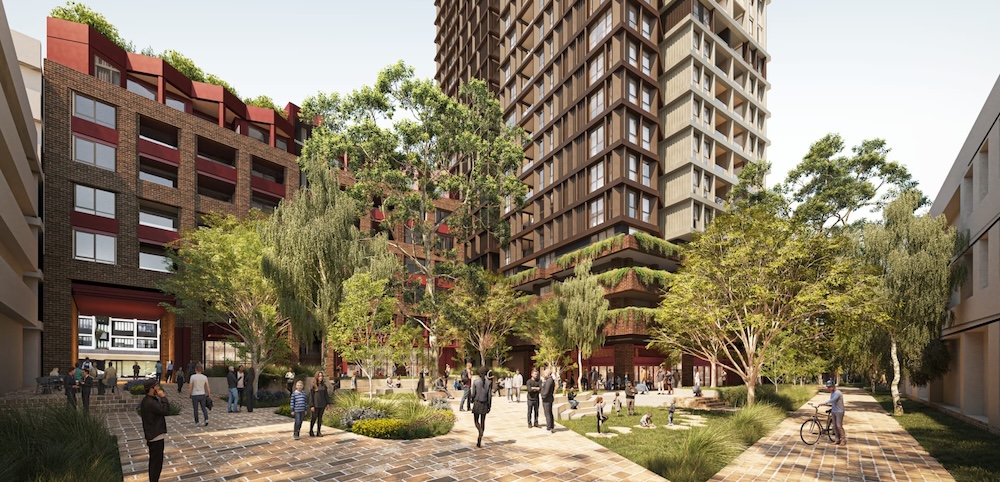
Sydney Opera House illuminated with portraits of trailblazers
The Sydney Opera House was illuminated this morning with the artwork of Indigenous artist Brett Leavy as part of the Dawn Service.
The digital artwork displayed on the monument’s sails depicted the portraits of four notable First Nations people, Nanbarry, Barangaroo, Pemulway and Patyegarang.
Kooma artist Brett Leavy developed the display, titled ‘Trailblazers’, with the Metropolitan Local Aboriginal Land Council in honour of the First People.
The Trailblazers
Nanbarry was brought into the Sydney colony as a nine-year-old boy. He was a survivor of the smallpox of 1789, which killed his parents, as well as 50 per cent of the Sydney Indigenous clans and an unknown number towards the Blue Mountains. A surgeon named John White treated him then adopted him, changing his name to Andrew Sneap Hammond Douglass White. He learned the English language and manners but he always insisted on being called Nanbarry. He later travelled the seas on English ships, navigating between his ties to the remaining Gadigal people and going to sea.
Barangaroo was a powerful Cammeraygal woman and leader of the Eora Nation. She was a fisherwoman, like many other Eora women, meaning they were the main food providers for their families. Colonial officers were reportedly intimidated by her presence and strength. She was unafraid of the settlers – once when she was invited to watch a flogging, she became disgusted and furious, and went to grab the whip out of the man’s hands. She had lost her husband and two children to smallpox, and later married Bennelong, an Eora man who had a significant role in the relations between the colonists and local people.
Pemulway was a courageous fighter who led a war of resistance against British settlers at Sydney Cove from 1788 to 1802. In 1790, he killed John McIntyre, Governor Arthur Phillip’s gamekeeper. The Eora people hated and feared McIntyre, who was sent to hunt and capture wild animals. His death may have been retribution for his breaking of Eora laws and violence towards the Indigenous population.
Governor Philip Gidley King described Pemulway as “a terrible pest to the colony”, but “a brave and independent character”. It was he who eventually outlawed Pemulway, offering an award for his death or capture. Pemulway was shot dead in June 1802, and his head was cut off and sent to the naturalist Sir Joseph Banks in England. The current location of his head is unknown.
Patyegarang was an Indigenous woman from the Cammeraygal clan of the Dharug nation. She is thought to be Australia’s first teacher of an Aboriginal language. Her friendship with William Dawes, an English Lieutenant and astronomer, is one of the earliest recorded cultural exchanges between Europeans and Aboriginal people.
Dawes had set up an observatory at Point Maskelyne, now known as Dawes Point, which became the site that he and Patyegarang would spend time together and share knowledge and humour. Patyegarang taught him words such as Putuwa, which means “to warm one’s hand by the fire and then to gently squeeze the fingers of another person”. We know mostly of Patyegarang through Dawes’ notebooks, but for her to spend time with a ‘white man’, and teach him her ways, is evidence of immense strength and courage.









